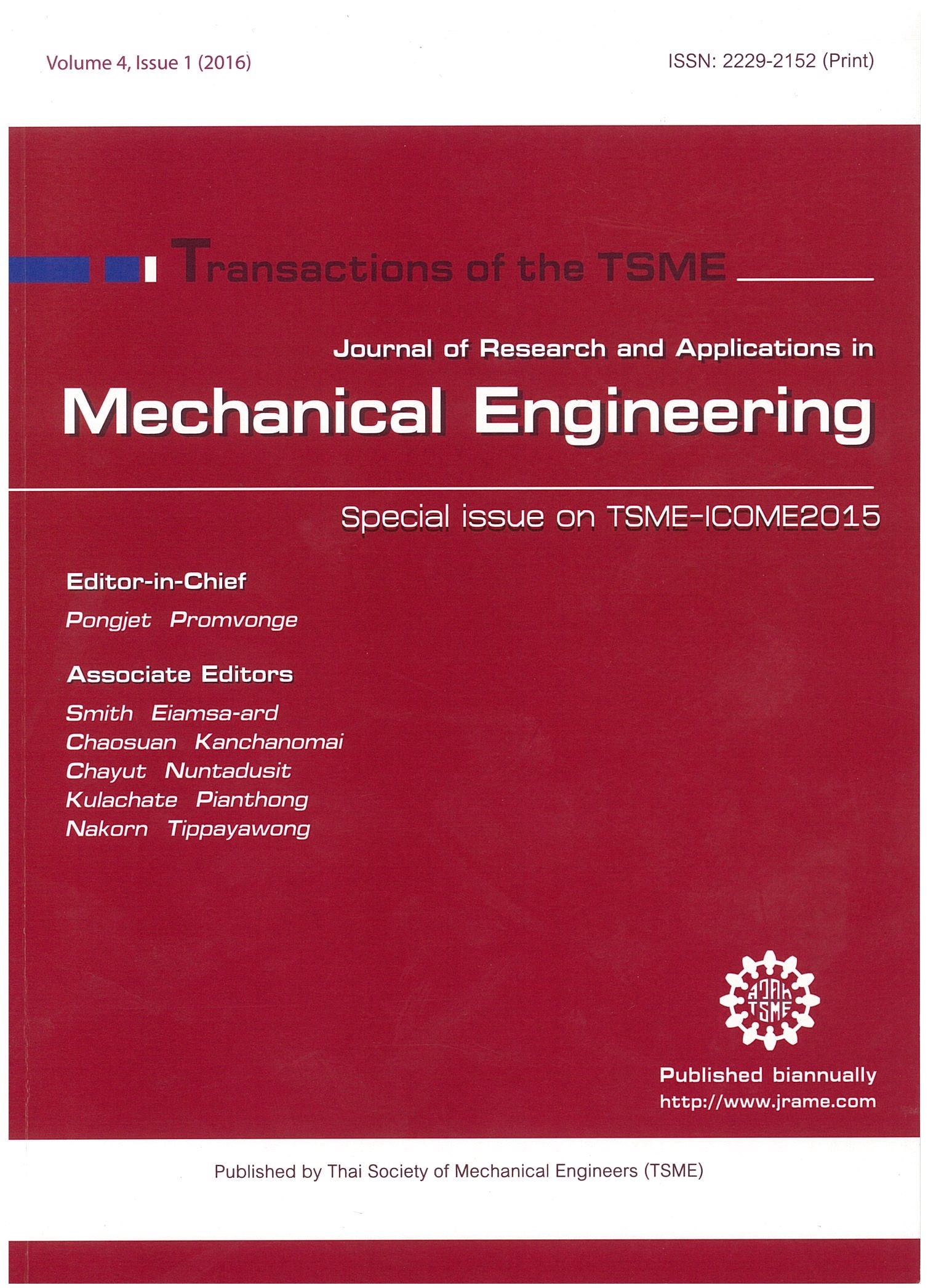Local-behavior determination for an omnidirectional mobile robot using an integration-type sonar ring
Main Article Content
Abstract
Time-of-flight ranging methods are generally utilized to measure distance using an ultrasonic wave sensor. However, faint reflected waves tend to be overlooked by this method. We have proposed an integration-type ultrasonic wave sensor that effectively uses faint reflected waves. This paper proposes a local-behavior determination method for autonomous mobile robots using a sonar ring, which consists of multiple integration-type ultrasonic wave sensors. This sonar ring can reduce the sensing time because it simultaneously obtains information from multiple directions. We apply our previously developed pathgeneration method to an omnidirectional mobile robot. Generally, the objective of a mobile robot is to reach a target position as quickly as possible. At the same time, the robot is required to avoid collisions with obstacles. Therefore, it needs to slow down to safely bypass obstacles in high-obstacle-density environments. This paper also proposes a method for controlling the velocity of the robot by generating the target acceleration. Our proposed method takes the upper limit of the input torque into account. Experimental results show that in the presence of obstacles in the vicinity of the mobile robot, the proposed method can decrease the velocity of the mobile robot in order to avoid collision with obstacles.
Article Details
This work is licensed under a Creative Commons Attribution-NonCommercial-ShareAlike 4.0 International License.
References
[2] Borenstein, J. and Koren, Y. Error eliminating rapid ultrasonic firing for mobile robot obstacle avoidance, IEEE Transactions on Robotics and Automation, Vol. 11(1), 1995, pp. 132-138.
[3] Wehn, H.W. and Belanger, P.R. Ultrasound-Based robot position estimation, IEEE Transactions on Robotics and Automation, Vol. 13(5), 1997, pp. 682-692.
[4] Nakamura, T., Takamura, S. and Asada, M. Behavior-Based map representation for a sonar-based mobile robot by statistical methods, IEEE/RSJ Int. Conf. Intelligent Robots and Systems, Vol. 1, 1986, pp. 276-283.
[5] Mataric, M.J. Integration of representation into goal-driven behavior-based robots, IEEE Transactions on Robotics and Automation, Vol. 8(3), 1992, pp. 304-312.
[6] Cahut, L., Valavanis, K.P. and Delic, H. Sonar resolution-based environment mapping, IEEE International Conference on Robotics and Automation, Vol. 3, 1998, pp. 2541-2547.
[7] Emaru, T., Kazuo, T. and Tsuchiya, T. Speed control of a sonar-based mobile robot with considering the selflocalization, IEEE Int. Conference on Mechatronics and Automation, Vol. 1, 2005, pp. 125-130.
[8] Emaru, T. and Tsuchiya, T. Implementation of unconsciousness movements for mobile robot by using sonar sensor, International Conference on Control, Automation and Systems, 2007, pp. 17-20.
[9] Emaru, T., Hoshino, Y and Kobayashi, Y. Speed control of a sonar-based mobile robot by considering the limitation of accelerated velocity, Journal of System Design and Dynamics, Vol. 4(1), 2010, pp. 38-49.
[10] Mur-Artal, R., Montiel, J.M.M. and Tardos, J.D. ORB-SLAM: A versatile and accurate monocular SLAM system, IEEE Transactions on Robotics, Vol. 31(5), 2015, pp. 1147-1163.
[11] Macdonald, J., Leishman, R., Beard, R. et al. Analysis of an improved IMU-based observer for multirotor helicopters, Journal of Intelligent & Robotic Systems, Vol. 74(3), 2014, pp. 1049-1061.
[12] Whelan, T., Kaess, M., Johannsson, H., Leonard, J.J. et al. Real-time large-scale dense RGB-D SLAM with volumetric fusion, The International Journal of Robotics Research, Vol. 34(4-5), 2015, pp. 598-626.



